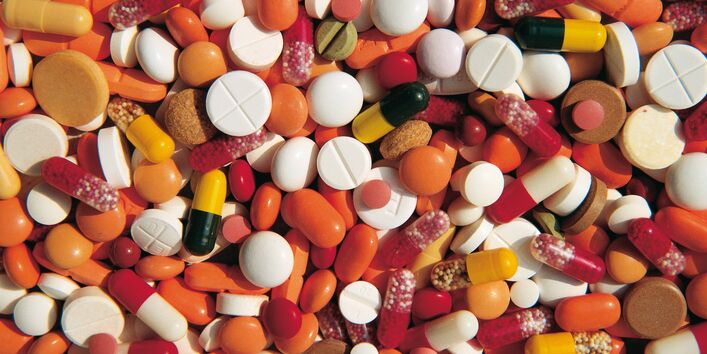Antibiotics: livestock industry and human medicine can pollute groundwater
Antibiotics used in livestock breeding and in human medicine can find their way into groundwater says a recent study by the German Environment Agency (Umweltbundesamt, UBA). Measurements were carried out at eleven selected sampling sites with contaminated groundwater in Lower Saxony, Schleswig-Holstein and North Rhine-Westphalia. The residual antibiotics found were mainly traceable to agriculture. Two sites showed very high concentrations that originated from nearby small wastewater treatment works. Maria Krautzberger, President of UBA, commented: "Groundwater must stay clean. This is the reason why the German Environment Agency has issued a recommendation for a threshold for antibiotics in groundwater."
The study entitled Causes of findings of veterinary antibiotics in groundwater samples – investigation of vulnerable locations in Northern Germany” is an in-depth UBA investigation to analyse inputs of antibiotics to groundwater in Northern Germany. An earlier project had detected various antibiotics in groundwater, and the present study uncovers their exact pathways. One pathway for antibiotic residues from agriculture into groundwater is the spreading of liquid manure on fields. Another reason for singular high concentrations in groundwater is the use of antibiotics by humans. In rural regions many houses outside of settlements are not connected to the sewerage and therefore have their own wastewater treatment systems. The discharges of these small wastewater treatment works introduce the pharmaceutical drugs into the near-surface groundwater. Ms Krautzberger said: “The results suggest that contamination of near-surface groundwater by small wastewater treatment works must be examined more closely“.
Antibiotics do not belong in the environment since there is a risk that multi-resistant bacteria could develop. Moreover, their effects on organisms in soil and groundwater are unknown. As a precaution, UBA therefore recommends the introduction of a threshold value for human and veterinary antibiotics in groundwater. Initially, the threshold should be based on the value for biocides and pesticides (100 ng/l). The inclusion of a threshold value in the Groundwater Ordinance would result in a more regular analysis of groundwater for traces of pharmaceutical products. Furthermore it would allow for both, the timely detection of exceedences of the threshold and the systematic identification of the causes for their input.
The study
Measurements were carried out at eleven sampling sites in Lower Saxony, North Rhine-Westphalia and Schleswig-Holstein, which required close cooperation with the farmers. Virtually all local farmers cooperated and provided information on the use of antibiotics for their livestock. “We are pleased with the cooperation of the agricultural associations and farmers. This cannot be taken for granted and it reaffirms our cooperative, constructive approach“, said Ms Krautzberger.
Details of results
Two measuring stations repeatedly revealed very high concentrations of the antibiotic sulfamethoxazole (at the maximum 950 ng/l in September 2013); they arose from human use. Analysis results of nearby small wastewater treatment works confirmed this finding.
The veterinary drug sulfadimidine was consistently found at nine of the eleven sampling sites in low concentrations of about 10 - 20 ng/l (up to 70 ng/l). It was successfully proven at half of the sites that the substance originated from animal housing where it was used as veterinary medicine; it got into the groundwater via manure. The Länder (e.g. Lower Saxony) are still in the process of analysing the remaining sites.
The active substance sulfadiazine and a relevant degradation product were also frequently detected in low concentrations (less than 100 ng/l, maximum 90 ng/l). It is applied almost exclusively as a veterinary antibiotic and enters the environment when liquid manure is spread on fields and seeps into groundwater. This pathway was recognised at all eight sites concerned. The antibiotic was also detected in small wastewater works, and therefore contamination of the groundwater from this source is feasible.
